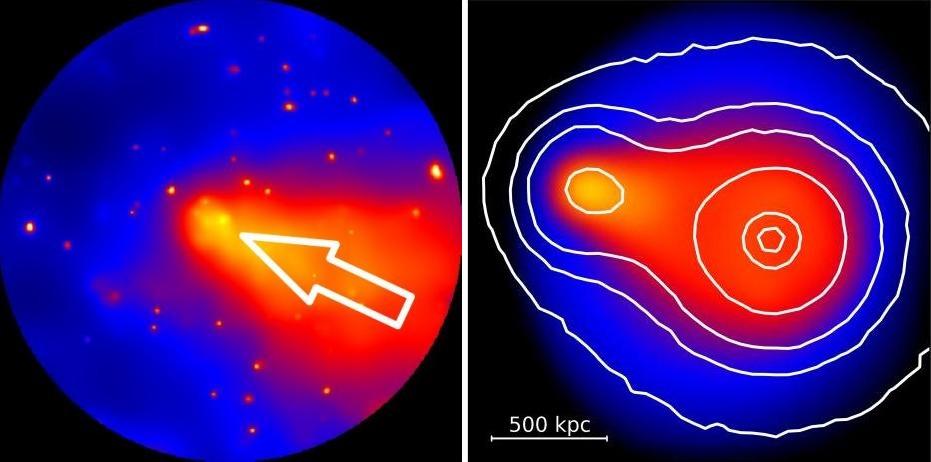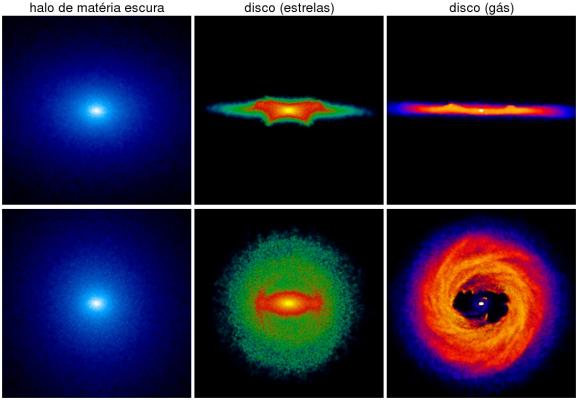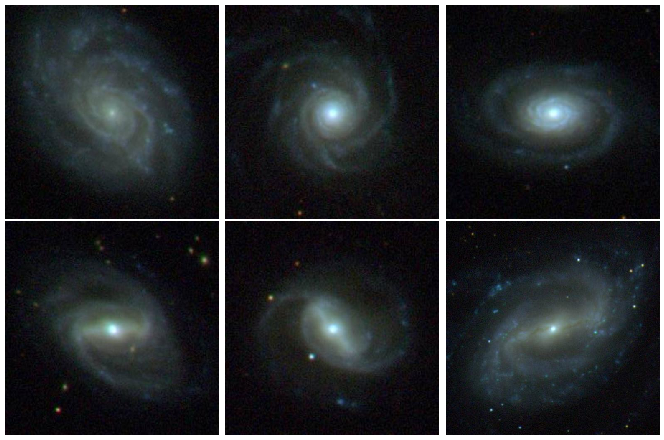Merging galaxy clusters

Galaxy clusters are the most massive collapsed structures in the universe. Mergers are the mechanism by which galaxy clusters form, and they are still growing by accreting sub-clusters. The collision of two galaxy clusters disturbs the hot intracluster gas, and may give rise to supersonic shock waves. In some cases, the collision causes the gas to be spatially dissociated from the dark matter, as in the notorious Bullet Cluster.
Computational simulations allow us to follow the gravitational evolution of such collisions, and thus to reconstruct the dynamical history of merging clusters. We have been studying one interesting galaxy cluster, Abell 3376, that displays a peculiar morphology suggestive of a recent collision (see also Bagchi et al. 2006). Using the Alphacrucis supercomputer at IAG, we performed a large set of numerical simulations that allowed us to propose a specific scenario for this meging event. Or numerical models also supplied an intriguing observational test, regarding the dark matter distribution in this cluster.
[Read more]
Barred galaxies

Galaxies are embedded within massive dark matter haloes. The shape of these haloes is expected to be non-spherical (generally triaxial), as suggested by cosmological N-body simulations.
The asymmetric gravitational potential influences the dynamics of the disk, which in turn affects the halo itself. With numerical simulations, we can study the role of bar formation in this interplay. By carrying out several high-resolution hydrodynamical simulations using Gadget-2, we are also able to consider the effects of gas in the disc. We find that discs with strong bars contribute to circularize their initially triaxial haloes. [Read more]
Spiral galaxies

One way of investigating departures from sphericity is to study the shapes of the luminous discs of spiral galaxies. As part of the work for my master's degree, I performed -- by visual inspection -- a morphological classification of nearly 4000 galaxies using images from the Sloan Digital Sky Survey. Having obtained more than 1600 spirals suitable for our purposes, I individually measured the shapes of their discs. By statistical deprojection, we found that their discs display a mild intrinsic non-circularity.
[Read more].
Chaos in galaxies

Galáxias são feitas de órbitas. As estrelas de uma galáxia se movem na presença do potencial gravitacional gerado pela matéria escura e pelas estrelas. E órbitas podem ser regulares ou caóticas. As órbitas periódicas são as que dão sustentação às estruturas estáveis da galáxia. Entrentanto, as órbitas caóticas também podem contribuir com a manutenção de certas estruturas: é o que se chama de "caos confinado".
[Read more].
Recent events
- Invited speaker at Semana Integrada do Instituto de Física de São Carlos, 30/09-04/10/2013
- Invited speaker at USP Conference: cosmology, large scale structure and first objects, 04-07/02/2013
Collaborators